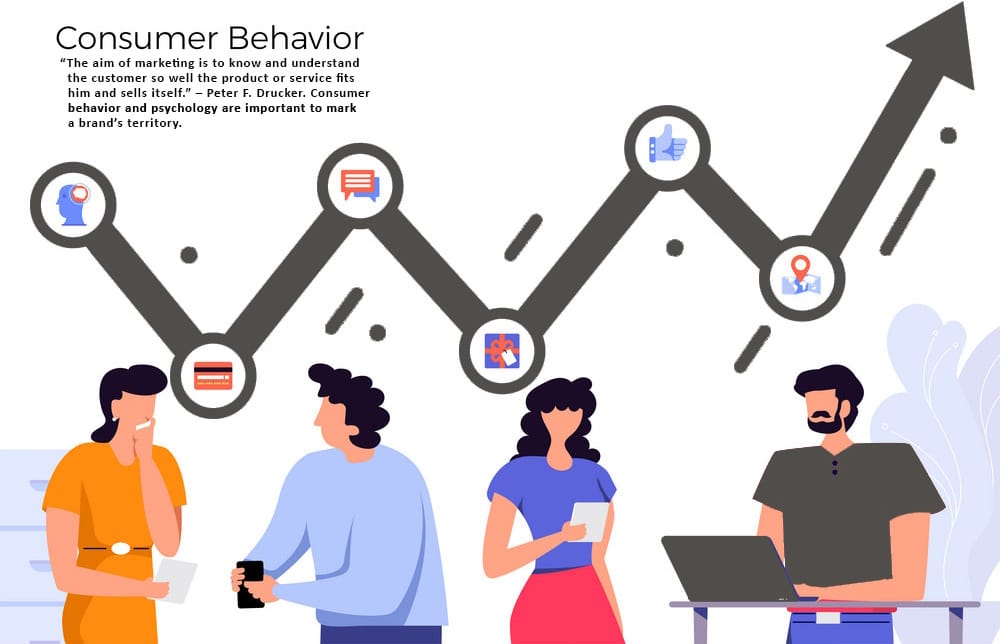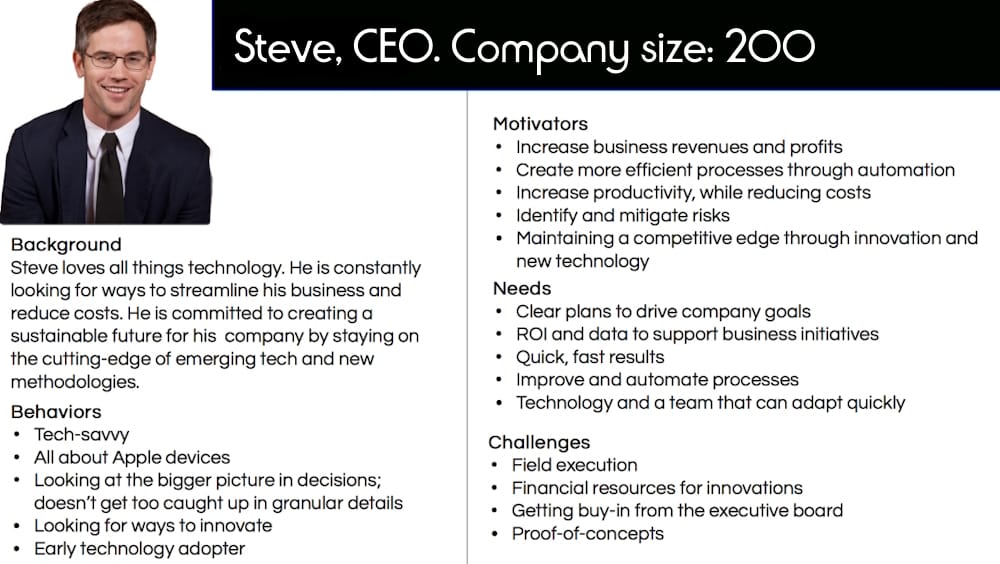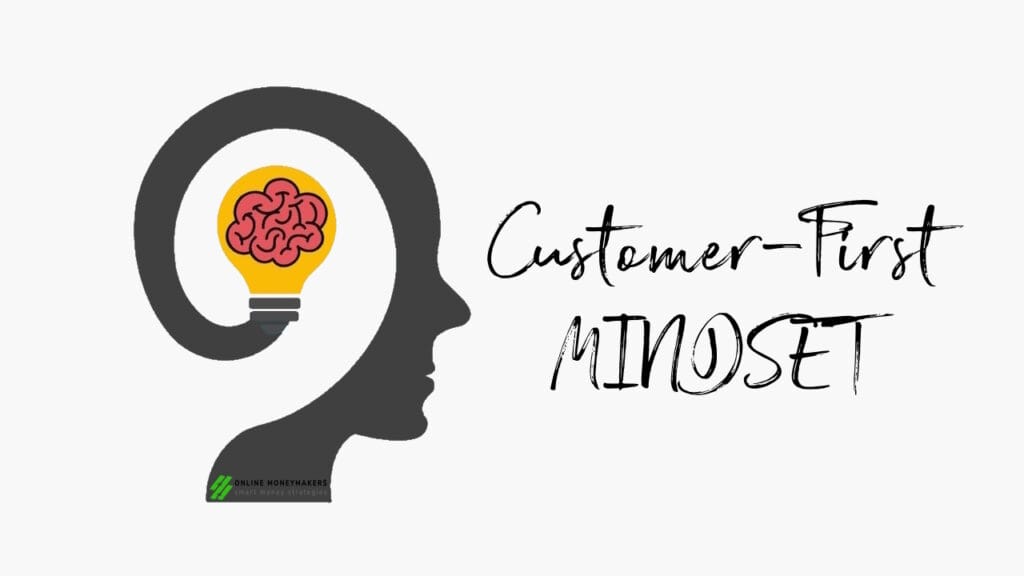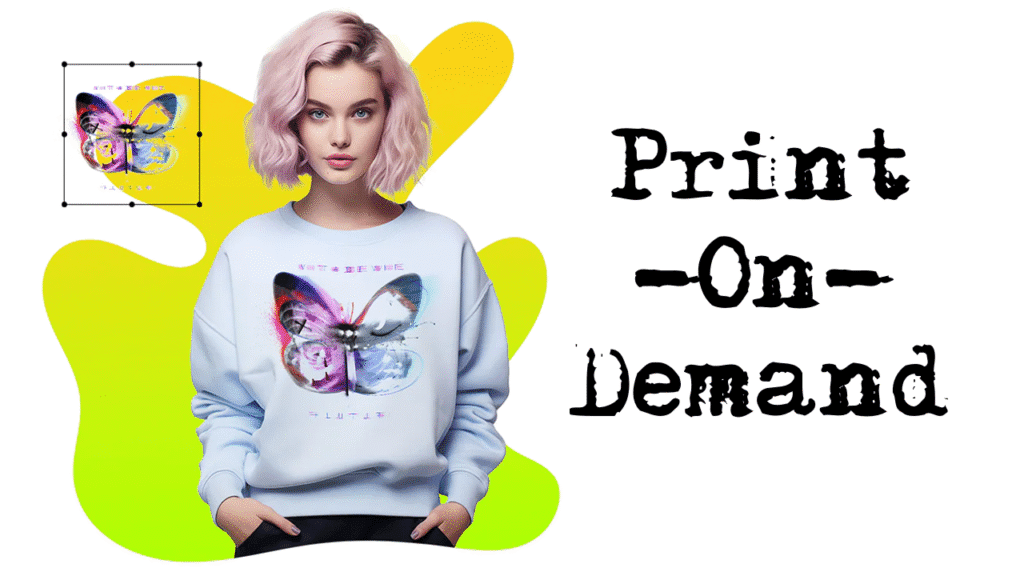In order to create a business offer that is interesting to consumers, you need to study your target audience (TA) well and create an image of an ideal customer. We tell you how to correctly create a customer profile, where to get information and what mistakes to avoid.
Why create a customer portrait:
A customer portrait (customer profile, user profile, customer avatar) is a collective image of the target audience. It describes a typical user of a product or service.
What are the benefits of compiling a customer portrait:
- It is easier to find new customers: You know what your customer should look like because you have a portrait of a specific person.
- It’s easier to identify customer interest: By comparing each new customer with the portrait, you will more accurately determine how interested they may be in your offer.
- You can increase the effectiveness of your commercial offer: Accurate knowledge of the interests of the buyer helps to make personalized offers. For example, one client travel agency offers inexpensive tours to the sea, another – extreme travel to deserted places.
- It is easier to choose promotion channels and marketing tools: You know where to look for customers and what they are interested in.
- Accurate segmentation: Without universal offers that “fit all”.
For a customer portrait, we create a character with a name, age and physical characteristics. There can be several such characters – the company’s audience is not always the same.

What is included in a customer portrait
Depending on the specifics of the business, the list of significant characteristics may vary. But these 4 groups of data are taken into profile almost everywhere:
1. Demographics:
- age
- gender
- ethnicity
- nationality
- religion
- marital status
- parental status
Knowing demographics helps you partially anticipate customer behavior. For example, you sell drugs that can only be purchased with a prescription from a doctor. Therefore, we will not include people without a prescription in our customer base – it is against the law.
Some people may not be able to use our product because of religious beliefs. For example, if you sell pork meat, you can safely exclude Muslims.
2. Geography:
- location
- climate
- cultural preferences
Knowing the country and city of your audience will help you more accurately set up targeted advertising in social networks. Taking climate into account will help you sell certain products more effectively, such as clothing and shoes. And knowing local holidays will come in handy when planning marketing campaigns.
3. Psychographics
Psychographic data is often confused with demographic data. The difference is that demographics shows who people are, while psychographics shows how they behave and what makes them emotional.
Psychographics include:
- hobbies
- interests
- values
- habits
Knowing psychographics helps you find people based on lifestyle, personality traits, and hobbies. For example, you sell premium equipment for gamers. So, you need to look for customers who are serious gamers.
4. Socioeconomic data:
- income level
- education
- occupation
- living conditions
- description of the house
For example, you own an online clothing store and you have several offers that differ in price: business suits for business executives, casual clothes for office workers, cheap sportswear. For easy segmentation, you can use the classification system by profession developed by PAMCo. It assumes 6 main classes:
- Upper class (managers, top managers, highly qualified employees)
- The middle class (middle managers)
- Junior middle class (department heads, office staff)
- Skilled working class (physical laborers with professional education)
- Lower working class (semi- and unskilled physical labor workers)
- Lowest income (pensioners, students, unemployed, low-wage workers)
A customer profile does not have to contain all of the characteristics listed. Choose data that you can apply to your company’s benefit.
Features of the customer profile in B2B
In B2B, a customer profile is a description of a decision maker. And it is important to take into account the characteristics and scope of the company whose needs your product/service meets.
A B2B customer portrait includes data such as:
- decision maker’s position
- business needs
- company size
- region of coverage
- specifics of activities
- number of employees
- average sales volume
- annual turnover
If we think carefully, we can see that there is no such thing as B2B. There are exactly the same people there who wake up in the morning, get on their phones, sit on social networks, and so on. So the abstract B2B here is actually more of a hindrance than a help.
One of the differences between a B2B person and a B2C person is that they often don’t make the decision themselves. The second difference is that the decision is usually delayed. Here it is easier to explain with the example of specific cases.
For example, let’s imagine a company providing accounting outsourcing:
If the client is a small company, the decision to cooperate can be made by the owner himself. And if it is a large one, the decision is likely to be made by the head of the accounting department. But in both cases, the outsourcing company can find not the head and owner, but just an interested employee. And the services will then be sold not only by the outsourcing company itself, but by the employee who will tell the business owner about it.
That is, the path in B2B is longer. To sell services to a business, it’s not enough to just talk about yourself and your professionalism. It is necessary to make sure that the person who is going to present the company to the management, was motivated to present it. Therefore, when drawing up portraits, it is important to take into account what motivating factors can encourage the business to cooperate.
In the case of accounting, the motivators may be evidence that the work will become of higher quality, there will be less of it, etc. In B2B, we evaluate consumers not only at the level of individuals, but also at the level of the company as a whole.

Where to get information to create a customer profile
Start by gathering detailed information about your target audience. To do this, answer the questions:
- What need does the product fulfill?
- Who is likely to be a customer?
- Where to look for potential customers?
- What problems do my buyers face on a regular basis?
After carefully working through the answers, you will have a portrait of your targeted audience. There may be several groups. Next, start working separately with each group to identify its typical representatives.
Let’s look at a few methods that will help you create a customer profile.
1. Audience surveys
The method of cold surveys (sociological research) helps to identify consumer preferences and clarify the level of interest in the product. The data obtained allows you to adjust the description of the target audience and customer profile.
Surveys can be conducted:
- in polling services (Global Marketing Research Services, Slido, EchoEngage)
- in thematic social media groups (embedded social media polls, Google Forms, Survey Monkey, Survio)
- on your website or in your social media group (survey services or list of questions);
- in an email newsletter (survey in the body of the email or a link to the survey form).
To motivate subscribers to take the survey, you can offer a benefit (gift, discount, special offer).
2. Customer questionnaires
Questionnaires clarify the description of TA and help to obtain additional data about a particular person. For example, information about age, place of residence and profession are standard questions in almost any user questionnaire.
If your site provides visitor registration, you can combine it with filling out a questionnaire. If you have a personal user account on your site, make the questionnaire a part of filling out the profile.
You can also use the questionnaire when creating an email newsletter – add a link to the questionnaire in the welcome email series.
3. Focus groups
To build a customer profile, invite a small group of people from the target audience to use the product. There can be several groups, according to the number of segments of the target audience. Sociologists recommend recruiting no more than 10 people for each group, so that we can talk to each participant in detail and form an objective opinion. At the end of the period of use, survey the users: what they liked about the product, what advantages and disadvantages they can note.
4. Search query research
You can check what your audience is interested in using Google Trends service. Checking queries related to your product will show how popular specific search phrases are. You can also see what else was searched for with a specific query and what similar queries were asked by users.
Studying Google Analytics reports helps you understand what search queries are driving users to the site or what they are looking for on the page.
5. Communicating with your target audience
The best way to get the opinion of potential customers is to communicate with them informally: register on forums, join groups on social networks. Create conversations about problems your product solves or ask questions related to customer needs. Facebook, LinkedIn and Reddit are great for these tasks, as they have an audience that can provide informal feedback.
6. Analyzing social media followers
From the information of social media accounts, you can get a lot of valuable data about your target audience. For example:
- contacts (full name, email address, phone number)
- demographics (gender, age, marital status)
- geography (where they live/work)
- interests (subscriptions to users and groups)
If the number of profiles to be analyzed is small, the analysis can be performed manually, recording the information in the client’s card and simultaneously in the comparison table.
You can get information about a client from their social media profile: If you need to study the data of a large number of users, use special tools for collecting statistics in social networks. You can analyze subscribers of a certain community using parsers () like a Bright Data or Apify.
7. Studying web analytics
From the Google Analytics reports connected to the site, you can learn:
- age and geographic data of visitors
- devices and browsers used
- time spent on the site
- number of pages viewed
- the sources of conversions to the site
- peculiarities of behavior on the site, etc.
8. Analyzing site traffic
Use the SEMRush service to get data about the audience of the site. Enter the site address in the search bar and you will see:
- general traffic data
- geographic statistics of visits
- traffic sources
- statistics on visitors from social networks
- user interests
- addresses of sites of interest to your visitors
Using SEMRush, you can study competitors’ sites to learn more about their audience. SEMRush shows site traffic, user geography, traffic sources, and interests of site visitors
9. Calltracking and listening to incoming calls
Connecting calltracking services helps you monitor phone calls by tracking sources. By using different phone numbers for different promotional channels, you can pinpoint which ads attracted customers and where they came to you from.
Listening to phone calls reveals patterns in customer behavior, identifies customer needs, and clarifies audience interests.
10. Employee surveys
Who knows the most about customer buying behavior? Those who interact with customers, of course. Managers, salespeople and support operators will tell you:
- what questions customers ask most often?
- what features of the product they pay attention to?
- what objections are raised?
An additional benefit of such communication is that you can identify the factors that led to the deal falling through. For example, the buyer was not satisfied with the long delivery or not suitable payment method.
As a result of these activities, you will get a detailed description of your audience and will be able to identify the typical characteristics of customers.
To create a real customer profile, avoid using guesswork and assumptions. You may discover traits you hadn’t thought of or add characteristics that aren’t really there.
Mistakes in creating a customer profile
A common problem when describing a client is substitution of concepts, when instead of a real character they describe the target audience in general.
Here is an example of a general description:
Men aged 18-25. Sell information products, provide consulting or professional online services, run a blog with a small audience. Want to increase organic traffic.
All young people who are involved in some type of online business fit this description of the target audience. You cannot create an offer that would attract them all without exception. Simply because they have different interests and needs.
Now look at another description of the client:
Mike. 25 years old. Professional web designer. Engaged in the development of design for websites and applications. Maintains a blog about web design on his own website and a themed community on Facebook. Dreams of opening a design school. Often attends events and hangouts related to digital. Actively practices networking. Attends the gym in his free time.
Now we see the target portrait of the client – the image of one real person. The description can be supplemented, interests and habits can be specified in more detail. The point is that when developing a commercial proposal, you will focus on one person: “Will Mike like the product?”, “What Mike will be interested in the service?”. It will be easier for you to find a solution that will meet the needs of one Mike.
To be good, portraits should be made on the basis of interviewing or some more or less in-depth analytics. In both cases, you need to collect a lot of data. After all, if we make a customer portrait based on one or two interviews, it is likely to be unrepresentative. Then there is the question of the quality of this Customer Journey Map and its suitability for solving business tasks.
And here comes the main difficulty – to reach a potential client and ask him the questions we need. And in the case of a B2B client, there is an additional difficulty – to find candidates for interviews, because there are fewer of them than in B2C.
In one segment of the target audience you may get several different client images. If they differ significantly, don’t try to reduce them into a single type. For example, with similar characteristics, but an age difference of 10-15 years, people’s needs may be very different. Create several portraits (customer profiles) and in the process of testing identify the most effective ones for your business.

An example of a customer portrait in online education
When you have clarified the description of the target audience and collected data on current customers, you can begin the main task – to make a customer portrait. We recommend using a table with questions, in which you will record information about typical representatives of a particular audience segment.
For example, your business is related to online education: you offer training in popular Internet professions. And the peculiarity of teaching is the presentation of information in small parts at a time convenient for users, which allows you to combine your studies and your main job.
| Data | Customer 1 | Customer 2 | Customer 3 |
| Age | 35 years old | 30 years old | 32 years old |
| Gender | Female | Female | Male |
| Marital status, children | Divorced, two children | Married, three children | Single |
| Place of residence | Los Angeles | New York | London |
| Area of employment | Finance | Sales | Office |
| Position | Accountant | Sales agent | HR Manager |
| Income level | $80 000 | $92 000 | £70 000 |
| Problems | High workload, lack of free time to spend with her children | Salary depends on the number of sales, she has little time for her family | He sees no options for development in her profession, but is not satisfied with him current salary |
| Needs | Additional income, career growth | Change of job and increase in salary | Increase in income |
| … | … | … | … |
You can supplement the table with the necessary data. After filling in the table, make an average description of the client: give the character a name, choose a photo and describe him/her with the collected data.
See how the client’s portrait can look like based on the information from the table:
Susanna Smith
35 years old
Lives in Los Angeles
Two children
Office worker
Annual income – $80,000
Susanna works in an office 5 days a week. Her morning starts with collecting and sending her children to school. Then she takes the subway to work. Her working day lasts until 5 pm. And her free time is only an hour of her lunch break, during which she eats lunch and talks to the children on the phone. The rest of her working hours are busy: there is a constant urgency in everything, constant emergencies and unforeseen situations.
On weekends, I want to spend more time with my kids – says Susanna – but that doesn’t always work out.
Susanna dreams that her income will increase and at the same time her free time will increase. She wants to give a good education to her children. However, she realizes that the increase in the volume of work will practically nullify communication with children.
Susanna is actively interested in everything that can increase her income and will have something to do with her profession. She is thinking about changing her activity and increasing her income…
As you realize, the more details you include in the client’s portrait, the better. You should get an image of a real person with a detailed description of their life.
With a detailed customer profile, you can formulate a commercial offer that will interest the selected audience. For example, Susanna from the example above might be interested in online training, which she will spend 20-30 minutes a day on and after completing which she will be able to work remotely, earning more than her current salary.
Even if you’ve put together a detailed profile of your ideal consumer, don’t take it as the final version. Go back to the portrait in 3-5 months and conduct another round of surveys, questionnaires or calls with customers. This will help you refine your customer profile and understand what has changed in them over time.
To summarize:
- Customer profile is a detailed description of your potential customer. It makes it easier to find new customers, offer relevant products, select marketing tools and segment your audience
- A customer profile includes demographic, geographic, psychographic, and socioeconomic data.
- You can collect information about customers through surveys, questionnaires, focus groups, search queries, analyzing profiles in social networks, studying web analytics data, communication with company managers and technical support.
- When creating a customer portrait, describe a specific character (or several characters), not the entire target audience.
- From time to time, adjust the finished customer portrait to keep it relevant.
We hope this guide has been useful and helped you look at a different angle on how to create a customer profile and avoid the pitfalls of properly defining your target audience.




